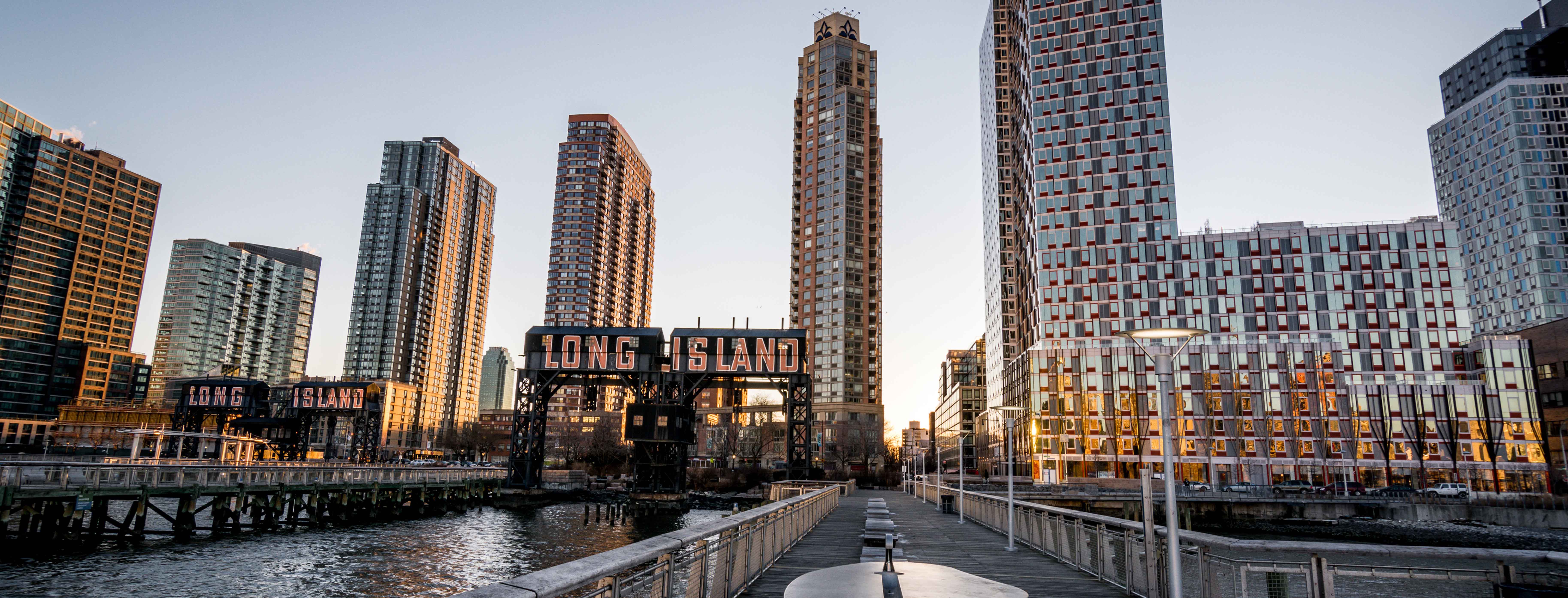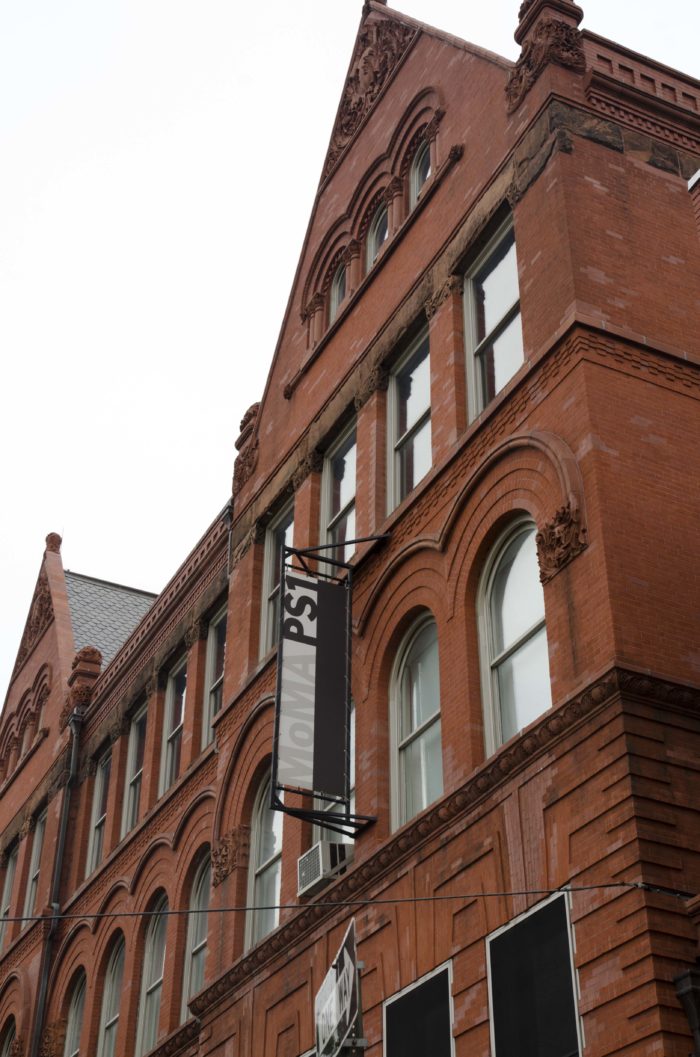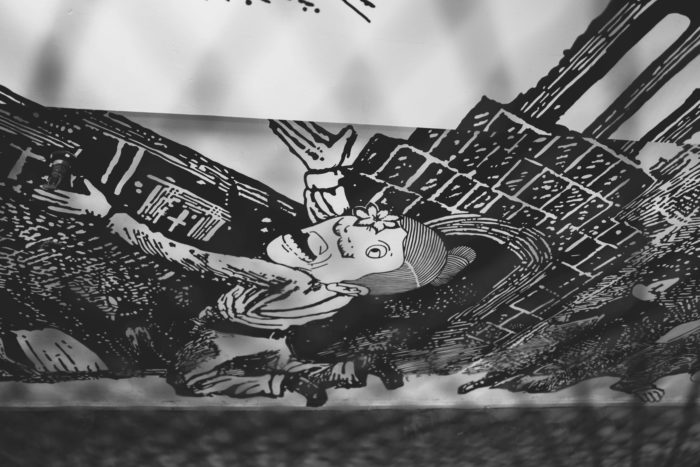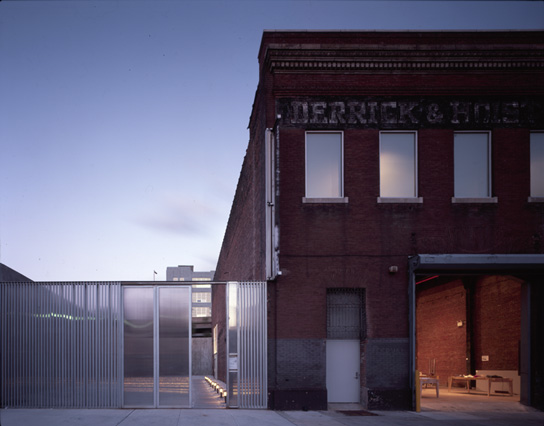Empty, ripe-for-conversion warehouses and factories—and their affordable rents—attracted numerous artists from Manhattan to Long Island City during the past couple of decades. They also attracted two significant art museums: MoMA PS1, an outpost of Manhattan’s Museum of Modern Art, and SculptureCenter, which relocated to LIC from the Upper East Side in 2001.
MoMA PS1. Image: edwardhblake/Flickr
The better-known of the two, MoMA PS1 (22-25 Jackson Avenue, between 46th Avenue and 46th Road) is the result of a merger of the P.S. 1 Contemporary Art Center and MoMA that was finalized in 2010. While MoMA owns an extensive collection of art, MoMA PS1 is not a collecting institution. Its mission is to provide exposure and support to experimental, innovative works by both emerging and established artists, and it defines itself as “a true artistic laboratory.”
A former school turned warehouse, the MoMA PS1 building was dramatically overhauled in the mid-1990s and expanded to 125,000 square feet, including an outdoor exhibition space. Site-specific long-term installations include Saul Melman’s “Central Governor,” the result of a six-month performance in which the artist covered the building’s old boiler with gold leaf, and “blps,” a series of rounded rectangles in a variety of media that are attached to walls, stairwells, and other surfaces throughout the museum.
“Cameraman,” by Abigail Lazkoz, one of the site-specific installations at MoMA PS1. Image: Michael Saechang/Flickr
MoMA PS1 has more than a half-dozen exhibits running through early September. Among them are “Failure Detection,” the first solo show of sculptor Julia Phillips, who uses ceramics and other materials to evoke the human form even while emphasizing its absence from the works; “Acts of Appearance,” a new series of photographs by Gauri Gill; and “Graphic Resistance,” drawings, prints, and collages by Sue Coe that address hot-button topics such as racism, sexism, and economic inequality.
During the summer, MoMA PS1 hosts the Warm Up concert series. Every Saturday beginning in late June, its courtyard is the site of a daylong festival of electronic, rock, and hip-hop music by performers from not just the States but also around the world. This summer’s concerts will take place within “Hide & Seek,” an installation by Dream the Combine, the winner of this year’s Young Architects Program organized by MoMA PS1 and MoMA. The installation features canvas canopies and mirrors that can be rotated by the wind and visitors alike.
SculptureCenter (44-19 Purves Street, between Jackson and Thomson Avenues) was founded by sculptor Dorothea Denslow in 1928 as the Clay Club. In the 1940s it adopted its current name and was located in a former carriage house on East 69th Street in Manhattan. Having outgrown that space, the not-for-profit organization bought a former trolley repair shop in 2001 and hired Maya Lin, the architect/designer best known for the Vietnam Veterans Memorial in Washington, DC, to convert the property into 6,000 square feet of indoor gallery space and 3,000 square feet of outdoor exhibition space; a 2,000-square-foot extension was added in 2014.
SculptureCenter before the addition of its 2014 annex. Image: Barry Halkin/Wikimedia
More important than the building, of course, are the works it displays. Like MoMA PS1, SculptureCenter does not have a permanent collection; instead it commissions works and provides exposure to contemporary artists, not all of whom are sculptors. Running through July 30, “74 Million Million Million Tons” is a multiartist, multimedia response to corporate and government narratives. Highlights include a sculpture by Shadi Habib Allah made of cell phones that replicates a communication system developed by Bedouin smugglers; a video work by Hiwa K depicting a man seeking political asylum in Europe; and a sound piece by Hong-Kai Wang in which Taiwanese farmers try to reproduce a once-suppressed song written by Taiwanese workers during Japan’s occupation of the country.
SculptureCenter also produced a temporary public art project by Xaviera Simmons that is on display at Hunter’s Point South Park through August 19. “Convene” consists of aluminum canoes painted to represent the flags of the native countries of local residents. And on August 18, going back to its roots as a provider of art classes and workshops, SculptureCenter will host Clay Club; all members of the public are invited to get creative with the ton of clay that will be brought into the exhibition space or to participate in events led by area artists.





